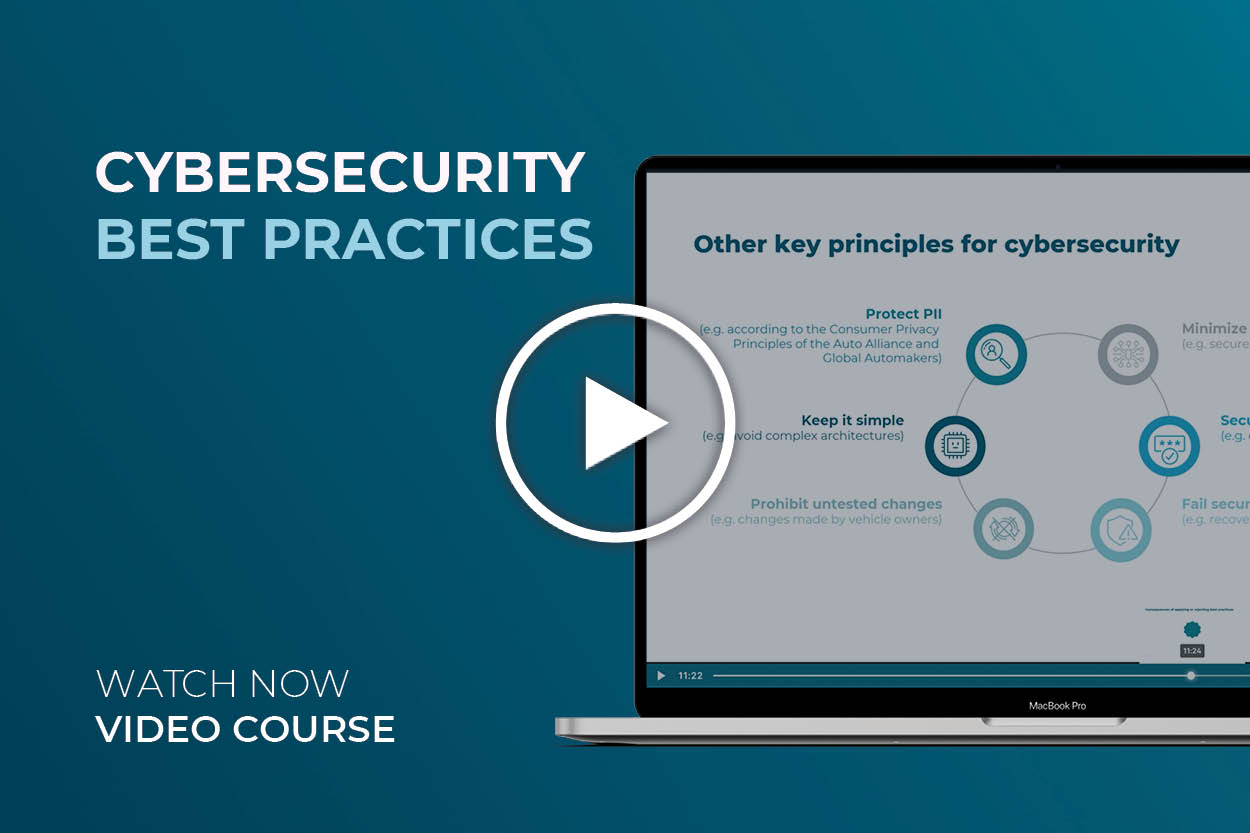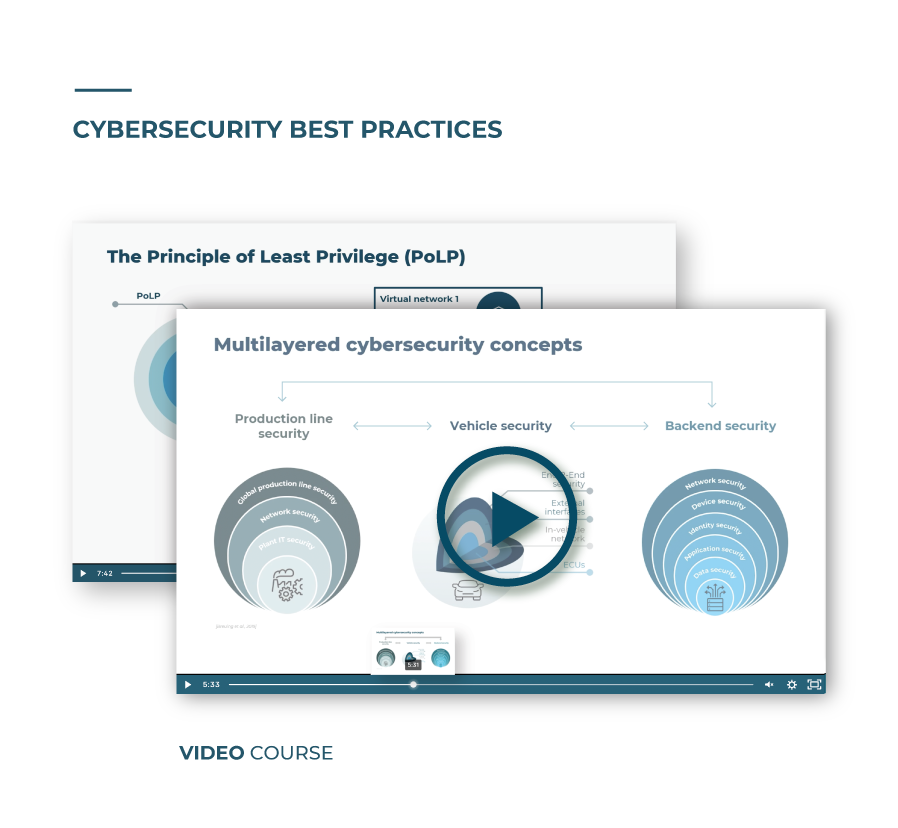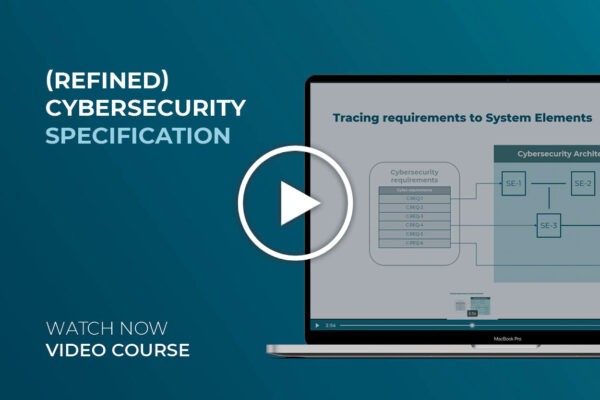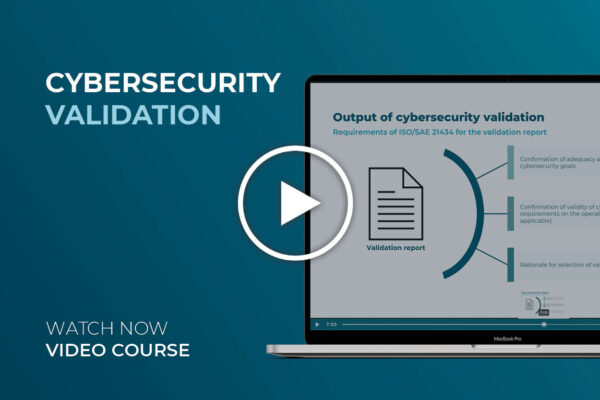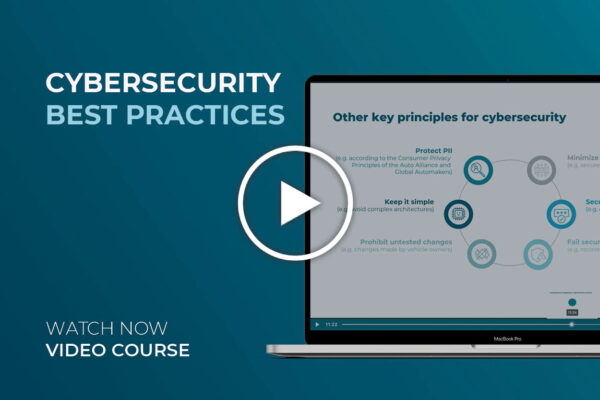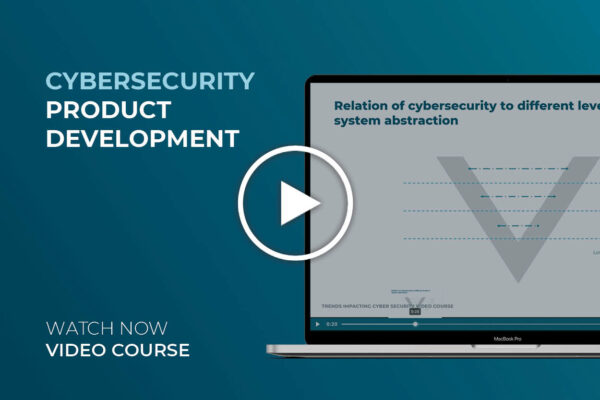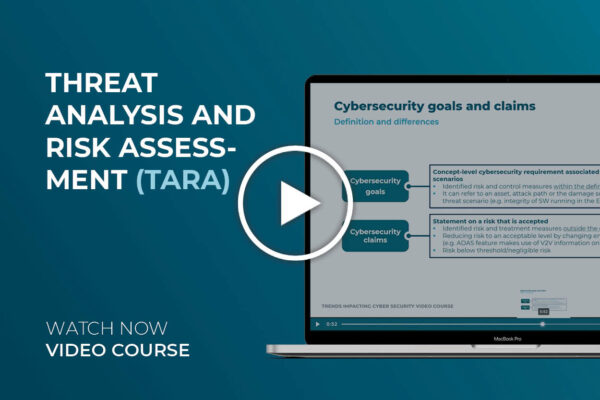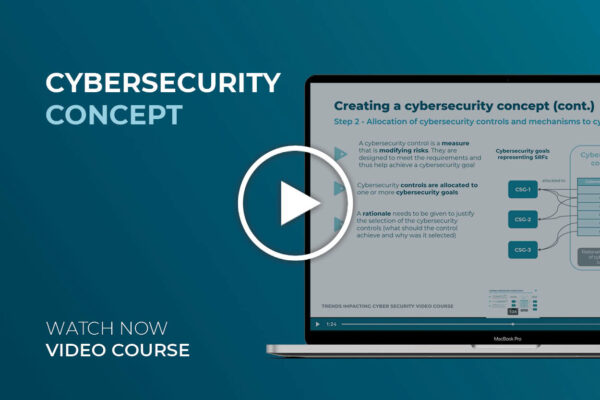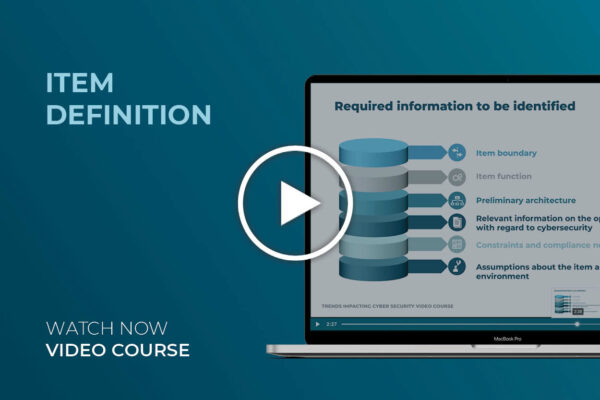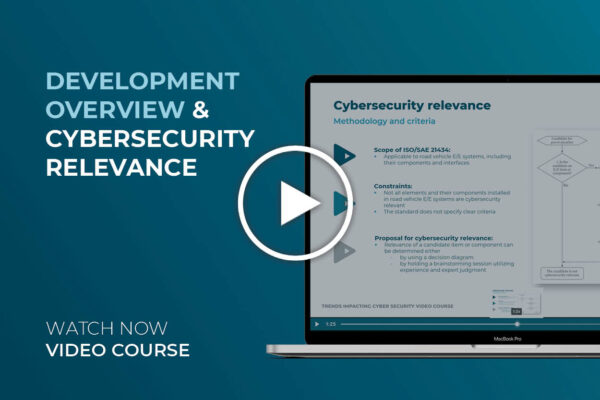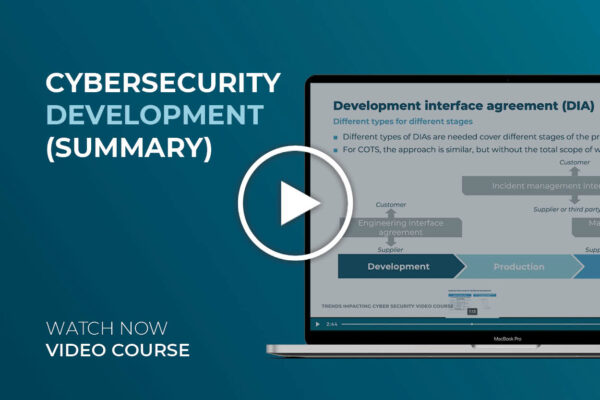Cybersecurity Best practices for automotive video course
Learn about already available best practices for automotive cybersecurity recommended by ISO/SAE 21434. Defense-in-depth, multilayered cybersecurity concepts, the principle of least privilege (PoLP), and cybersecurity by design, are some of the multiple cybersecurity best practices you will learn about in this video course. As a final result, you will gain new methodical ways to support vehicle cybersecurity and follow a proven approach.
Best practices for automotive cybersecurity are already available. Get an overview in this video course.
Yes, the automotive cybersecurity field is still emerging; however, there are already best practices available at hand. In the video course “Cybersecurity best practices for automotive”, we will present some of the best practices, based on previous project experience, which follow a proven approach to support vehicle cybersecurity.
First, we will explain what best practices are in general and in the context of the modern vehicle ecosystem and start presenting each of the recommended best practices not only by ISO/SAE 21434, but based on experience.
As a second step, we will continue presenting practices such as Defense in depth, multilayered cybersecurity concepts, the principle of least privilege (PoLP), and cybersecurity by design; which make it harder for attackers to access relevant systems or items, as well as better secure control systems and private data.
In addition, we will go over six other key principles for cybersecurity. Finally, you will learn about the benefits of implementing such practices, as well as the negative consequences from neglecting them. On the other hand, you will also learn about key aspects you must consider before choosing to implement a practice, as not all of them might be right for your product.
Why the Cybersecurity Best Practice for Automotive video course is relevant for you
For software and hardware engineers
It is always beneficial for your current role to educate yourself on best practices that will help you avoid mistakes and perform your job better and more efficiently. In this video course, you will learn about best cybersecurity practices relevant to vehicle level security, as well as backend level security.
Save cost and effort across multiple areas
Similar to software and hardware engineers, systems engineers must also have best practices in mind to achieve a secure system design. Following the proven approach, as recommended on this video course, is not only beneficial for your daily role, but also for the business, product, and customer.
Cybersecurity Best Practices for Automotive – Video course content
Here, we will introduce the topic, its importance, the learning objectives of this video course, and how they will benefit you in your daily role.
II. Best practices for cybersecurity
Understand the concept of best practices in general, why they are relevant due to the increased V2X and modern vehicle ecosystem, as well as what will be the scope of this video course.
III. Defense in depth
Learn about this automotive cybersecurity best practice, recommended by ISO/SAE 21434. In a visual overview, we will explain its purpose and how it affects development.
IV. Multilayered cybersecurity concepts
Recognize why the automotive ecosystem, as a multilayered challenge, requires automotive cybersecurity to cover the vehicle, its production environment, and backend. Get an overview of which security is needed at each level in a visual overview.
V. The Principle of Least Privilege (PoLP)
Here, we will explain what the principle of least privilege is in general and in the automotive context. You will also get examples of where this principle can be applied to and a use case scenario to reinforce the concept of PoLP.
This best practice is also recommended by ISO/SAE 21434 during development. Understand how this concept is originated and how it leads to a secure system design.
VII. Other key principles for cybersecurity
Learn about six other best practices in cybersecurity, besides the ones mentioned in the previous sections in a visual and concise overview. An explanation will be provided by each.
VIII. Consequences of applying or rejecting automotive cybersecurity best practices
In a side to side comparison, we will go over the benefits of applying best practices and negative consequences when ignored. Plus, we will highlight other considerations when implementing best practices.
IX. Summary and Outro
Finally, we will recapitulate on the main lessons learned during this video course and conclude the video course with final thoughts.



